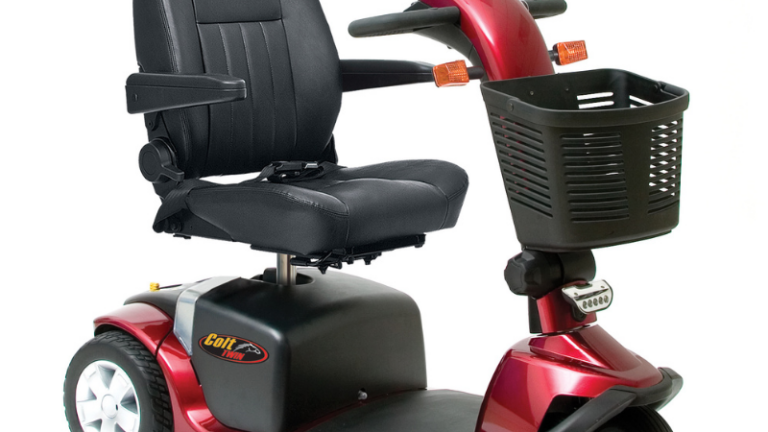Introduction
Creating an accessible home is crucial for individuals with mobility challenges. Proper modifications can significantly improve the quality of life, offering greater independence and safety. This article explores various home modifications that enhance mobility, ensuring a comfortable and functional living environment.
Entryway and Door Modifications
The first step in making a home accessible is to modify entryways and doors. Installing ramps instead of stairs provides wheelchair access, and ensuring that doorways are wide enough to accommodate mobility devices is essential. Automatic door openers and lever-style handles can further facilitate easy entry and exit. These modifications help eliminate barriers, allowing seamless movement in and out of the house. Enhance your home’s accessibility with LARGE SCOOTERS explore the best options now.
Bathroom Accessibility
Bathrooms are often the most challenging areas to navigate for individuals with mobility issues. Installing grab bars near the toilet and in the shower or bathtub can prevent falls and provide support. Walk-in showers with non-slip floors and handheld showerheads offer safer and more convenient bathing options. Raised toilet seats and accessible sinks with knee clearance improve usability, making daily hygiene routines more manageable.
Kitchen Adaptations
An accessible kitchen enables individuals to prepare meals independently. Lowering countertops and cabinets allows for easier reach, and pull-out shelves make accessing items simpler. Installing a side-opening oven and a cooktop with front-mounted controls enhances safety and convenience. Additionally, lever-style faucets and anti-scald devices can prevent burns and provide greater control.
Stair Lifts and Elevators
For homes with multiple levels, installing stair lifts or residential elevators can make a significant difference. Stair lifts are practical solutions that allow individuals to safely navigate between floors while remaining seated. Residential elevators offer a more comprehensive solution, providing easy access to all levels of the home without the need for stairs. Both options ensure that mobility challenges do not limit access to the entire living space.
Flooring and Lighting
Flooring and lighting are critical aspects of an accessible home. Smooth, non-slip flooring materials such as hardwood, vinyl, or low-pile carpet reduce the risk of trips and falls. Adequate lighting throughout the home, including motion-activated lights, ensures that all areas are well-lit and safe to navigate, even at night. Proper lighting can enhance visibility and prevent accidents, especially in hallways and staircases.
Smart Home Technology
Incorporating smart home technology can further enhance accessibility. Voice-activated assistants, smart thermostats, and automated lighting systems allow individuals to control their environment with ease. Smart doorbells and security systems provide added safety and convenience. These technologies offer greater independence, enabling users to perform daily tasks without relying on others.
Conclusion
Home modifications for mobility are essential for creating a safe and comfortable living environment for individuals with mobility challenges. By addressing entryways, bathrooms, kitchens, and overall home layout, these modifications enable greater independence and enhance the quality of life. Whether through structural changes or the integration of smart technology, making a home accessible ensures that everyone can navigate their living space with ease and dignity.
FAQs
1. What are the most important modifications to make a home accessible for someone with mobility challenges?
The most critical modifications for making a home accessible include installing ramps or lifts for entryways, widening doorways, adding grab bars in bathrooms, creating barrier-free showers, lowering countertops and cabinets in the kitchen, and ensuring smooth, non-slip flooring throughout the home. These changes help eliminate barriers and provide safer, easier navigation for individuals with mobility issues.
2. How can I make my bathroom more accessible?
To make a bathroom more accessible, consider installing grab bars near the toilet and in the shower or bathtub, using a walk-in shower with a non-slip floor, adding a handheld showerhead, raising the toilet seat, and ensuring the sink is accessible with knee clearance. These modifications provide support, reduce the risk of falls, and make daily hygiene routines easier and safer.
3. What options are available for making multi-level homes accessible?
For multi-level homes, installing stair lifts or residential elevators are effective solutions. Stair lifts allow individuals to move between floors while seated, and residential elevators provide comprehensive access to all levels without the need for stairs. Both options ensure that mobility challenges do not restrict access to different parts of the home.
4. How can smart home technology improve accessibility for individuals with mobility issues?
Smart home technology enhances accessibility by allowing individuals to control their environment easily. Voice-activated assistants can manage lights, thermostats, and security systems, while automated lighting ensures well-lit spaces. Smart doorbells and security cameras add convenience and safety. These technologies offer greater independence and ease in performing daily tasks without needing physical assistance.
5. What flooring and lighting changes should be made to enhance home accessibility?
To enhance home accessibility, use smooth, non-slip flooring materials like hardwood, vinyl, or low-pile carpet to reduce the risk of trips and falls. Ensure adequate lighting throughout the home, including motion-activated lights for better visibility, especially in hallways and staircases. Proper lighting helps prevent accidents and makes it easier to navigate the home safely.

